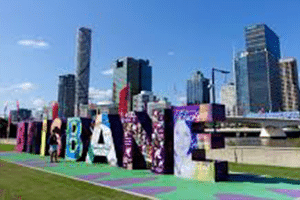Please fill out the details below to receive information on Blue Wealth Events
"*" indicates required fields

Queensland’s economic landscape is one that is growing in popularity and strength. Brisbane, being the largest economic hub in the north, can be used as an indicator of our sunshine state’s performance. Recently, Brisbane’s metropolitan economy has experienced a rise in employment, shifts towards technology-based industries and population levels outpacing previous forecasts.
Revision of past projections show Brisbane’s municipality growing at a rate 27% faster than expected. The catalyst of this growth has been interstate migration, driven by first home buyers and families from our major, less affordable (Sydney and Melbourne) opting for the city as a more attractive and economical lifestyle.
Population growth is a positive sign for an economy, it typically indicates that residents are attracted to the region by strong employment opportunities, high health standards and appealing lifestyle. What a continually growing epicentre of people does however is produce an inherent need to provide efficient infrastructure planning. The demand for adequate health, entrainment and transport amenity is one that grows with a population.
Queensland’s state government and Brisbane’s governing bodies have taken a proactive approach in solving this impending challenge. Planning regimes have been implemented that include significant contributions towards public infrastructure, while promoting private investment into major precincts. This includes planned interconnection of future transport links and commitment to urban renewal precincts is all part of the ‘Brisbane vision’, aimed to provide long term planning for a future city.
When citing the Australia New Zealand infrastructure pipeline, it is clear how concentrated the state’s spending is on the Brisbane economy. Of a possible 43 major projects in Queensland, 30 are located in south east Queensland, of these a large majority are central to Brisbane city. Below is an outline of ten infrastructure projects that are expected to be produced by 2025, in Brisbane’s inner ring:
| Project | Production Value | Description |
| Cross River Rail | $5.2 billion | 10.2 kilometres state of the art rail link stretching from the north to the south of the city |
| Queens Wharf Precinct | $3 billion | This entertainment precinct is expected to employ over 8,00 residents upon completion in 2022 |
| Brisbane Live | $2 billion | Built in the vision of being compared to Madison square, this entertainment arena is expected to hold over 17,000 people |
| Brisbane Metro | $944 million | Brisbane’s public transport system will be boosted, with 21 kilometres of metro rail services replacing buses |
| Brisbane Airport Runway | $400 million | Will increase the Brisbane airport to an equivalent size of Hong Kong or Singapore airport |
| Millennium Square | $1.8 billion | An innovative urban renewal project will be located in Bowen hills, offering a mix of residential and commercial floor space |
| Brisbane Quarter | $800 million | Multi tower development will include over 58,209m2 of commercial floor space |
| Howard Smith Wharves | $110 million | Rejuvenation of the last Brisbane city wharf, beneath the story bridge will introduce new entertainment amenity |
| Brisbane Showgrounds | $2.6 billion | This major redevelopment aims to create a new entrainment and dining quarter on King street |
| Northshore Hamilton | $5 billion | One of the largest urban renewal projects in Australia, includes 304 hectare master plan that includes multiple business parks and conference centres |
| $21 billion | Total infrastructure spending |
Currently in the pipeline for Brisbane’s economy is over $20 billion worth of approved infrastructure projects. This exceptional level of development has spurred industry powerhouses such as Cushman and Wakefield to state Brisbane’s economy will grow by 16% over the next five years and is expected to boon those that are vested in the economy. This reported infrastructure boom will have a two-tiered effect. Initially providing primary employment to the engineering and trade industries throughout production and secondarily leaving reusable amenity to the future population in the form of transport, facilities and new landmarks.
Brisbane continues to undergo a widespread evolution as it transitions into a world city. What was previously Queensland’s economic engine is now a flourishing epicenter of culture and entertainment. Consequently, an appealing lifestyle continues to draw Australian residents north. As Brisbane progresses it is our view that proximate property markets will benefit.
